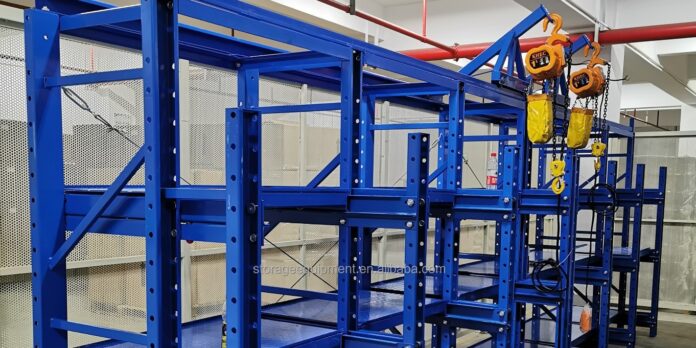Injection molds are quite a material that many businesses rely on. These are often used in the polymers sector to make packaging and boxes, bottles, and silicone or latex elements, among other items.
In practically every sector, from culinary to pharmaceutical, covering oil and gas, medicines and beauty, home appliances, transportation, and plenty more, injection-molded parts are employed.
Die and mould racks enable the safe and effective organization of dies and molds, as well as the optimization of storage space. For certain areas, any arrangement of units and capacities may be built.
What is a mold rack?
Mold racks are made up mostly of pillars, sliding panels with bearings, an upper lifter, and guiding rails. They are commonly used to store several aspects of project forms such as injection molds, die-casting, and molds.
It is classified into regular mold racks and open mold racks based on its load-carrying capacity. Conventional mold racks typically have quite a maximum capacity between 200-800kg per column and a peak weight capacity of a thousand kg. Meanwhile, open mold racks have a load capacity of 1.500-3.000kg per tray, which is suitable for reaching big molds.
Maximized Vertical Storage
Standard manufacturing racks may not be big or heavy enough to hold all of a manufacturer’s models on numerous levels, demanding horizontal extension and the utilization of precious floor space.
Some racks might provide upward storage space in circumstances where once companies had to store injection mold equipment on the floor. Many companies will allow you to choose the number of layers and maximum weight desired. This will free up lateral space for more gear, better access, and more storage racks.
Customized Sizes and Setups for Increased Efficiency
Customized stacking options for your components, slots, and controller unit dies are developed by some firms. Storage density, mold dies access, and tool transition time are all improved when you choose a solution that is particularly linked with your production process.
Take this into consideration while selecting a bespoke injection mold racking solution:
- Measurements for special hardware: The site characteristics and corporate rules of a production plant may need a customized version of a conventional racking system.
- Compatibility of equipment: Forklift producers might benefit from our racking solutions with fork entrance bars. Consider rack designs and possibilities in connection to much more automated material handling equipment or one-of-a-kind die-changing operations.
How To Get Your Injection Molds Ready For The Rack
While the mold is hardening, add rusting preventative to the closed mold, sheets, and mold foundation. It will help avoid rust and corrosion caused by moisture. This is a “dirty” stage because the heated mold will emulsify and flow the lubricants in the rust preventative. It still shields the mold until it becomes cold enough to remove and transport to the tool room for dismantling.
Tear down the complete mold unit. Next, search for gas accumulation, color spots, water stains, resin coatings. Also look for any other pollution that may have accumulated on the mold unit during the product cycle.
Store nothing on top of them because may drag them down or distort them. This might even impair the mold’s structure and potentially harm its natural shape.













